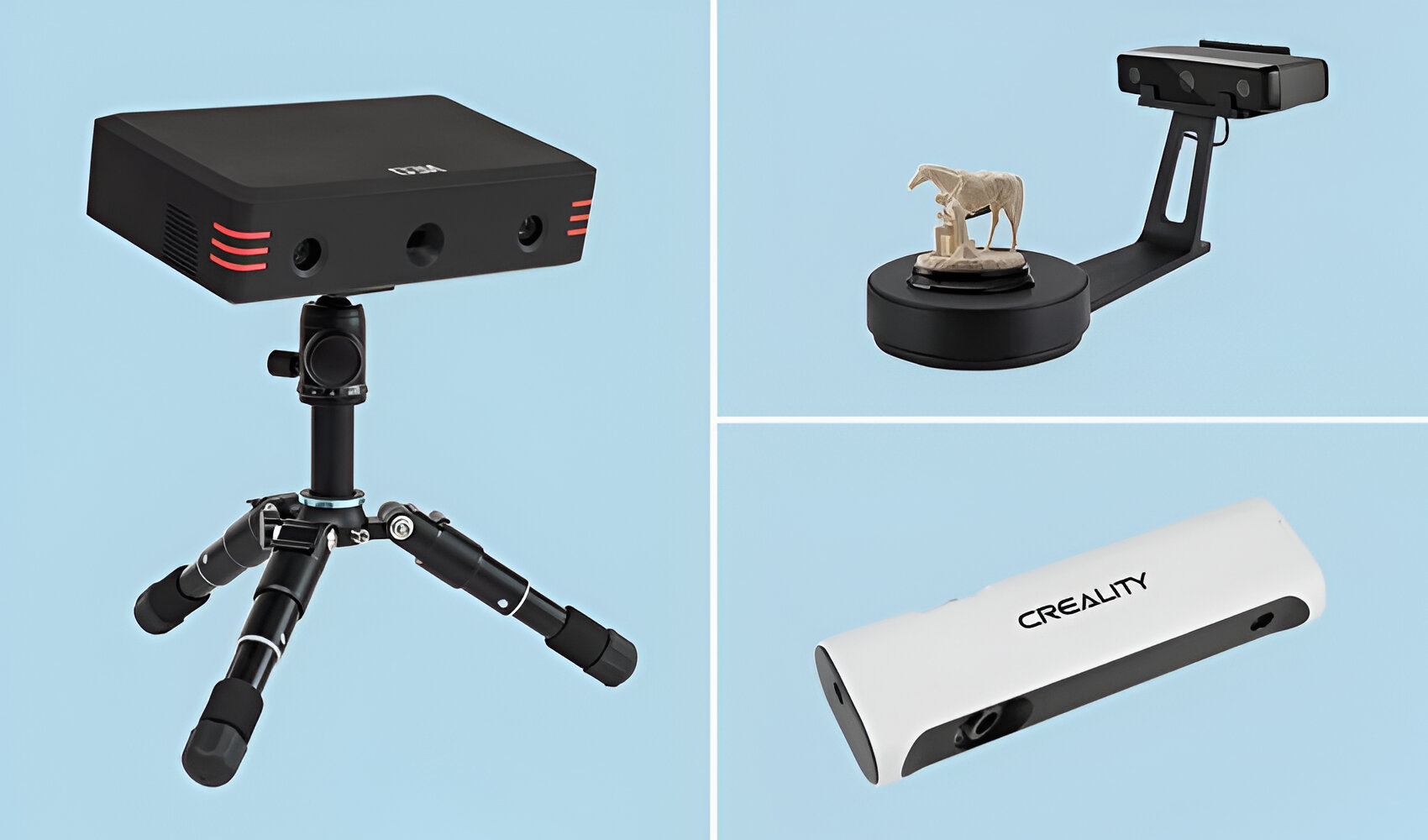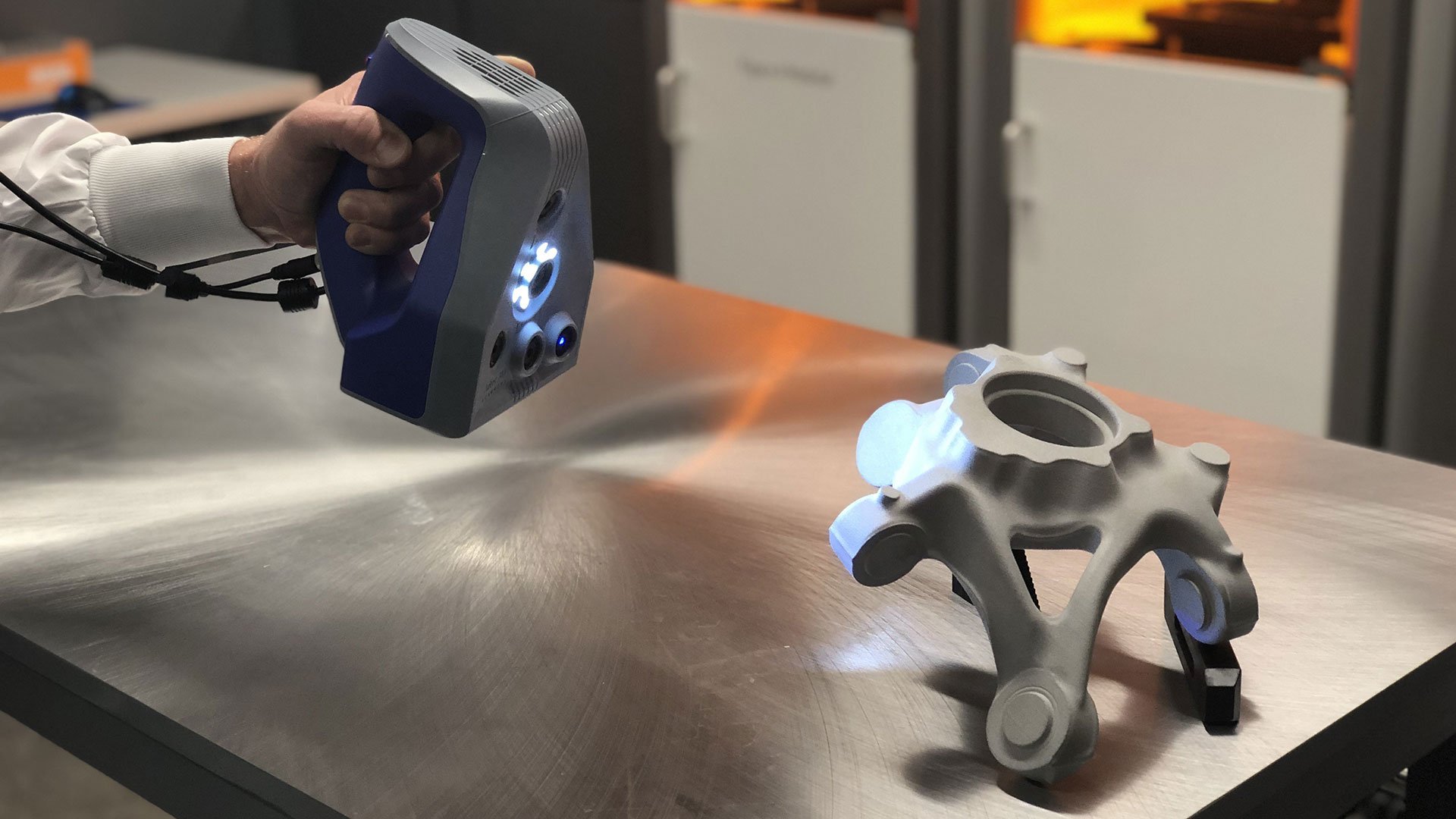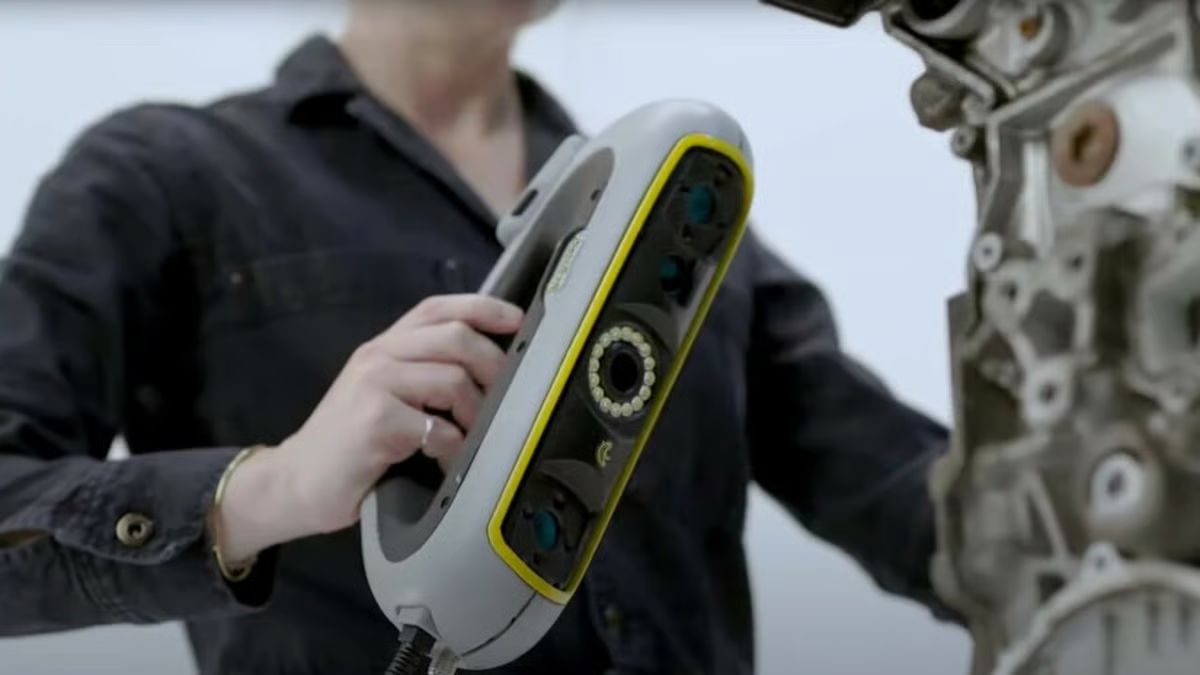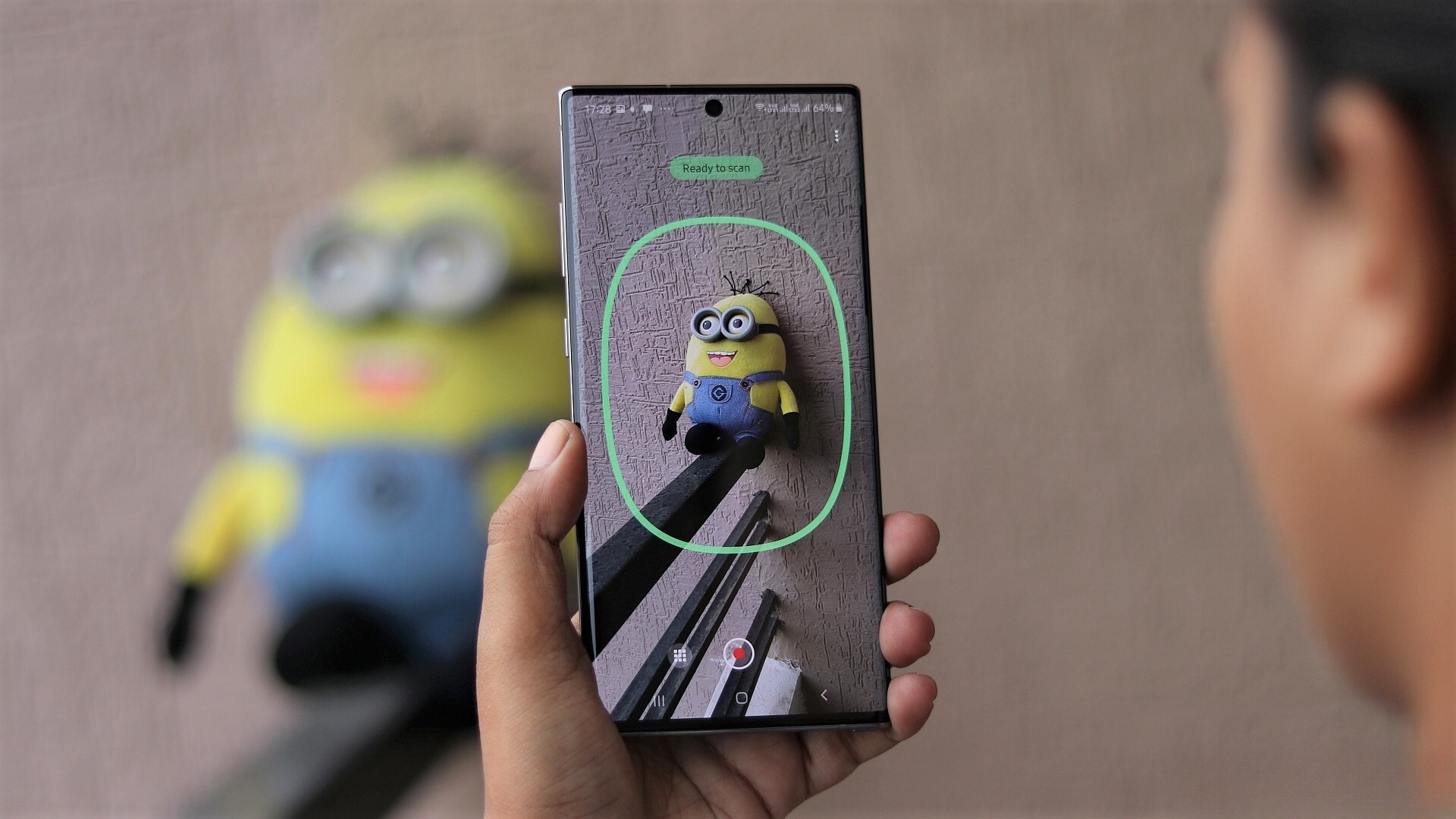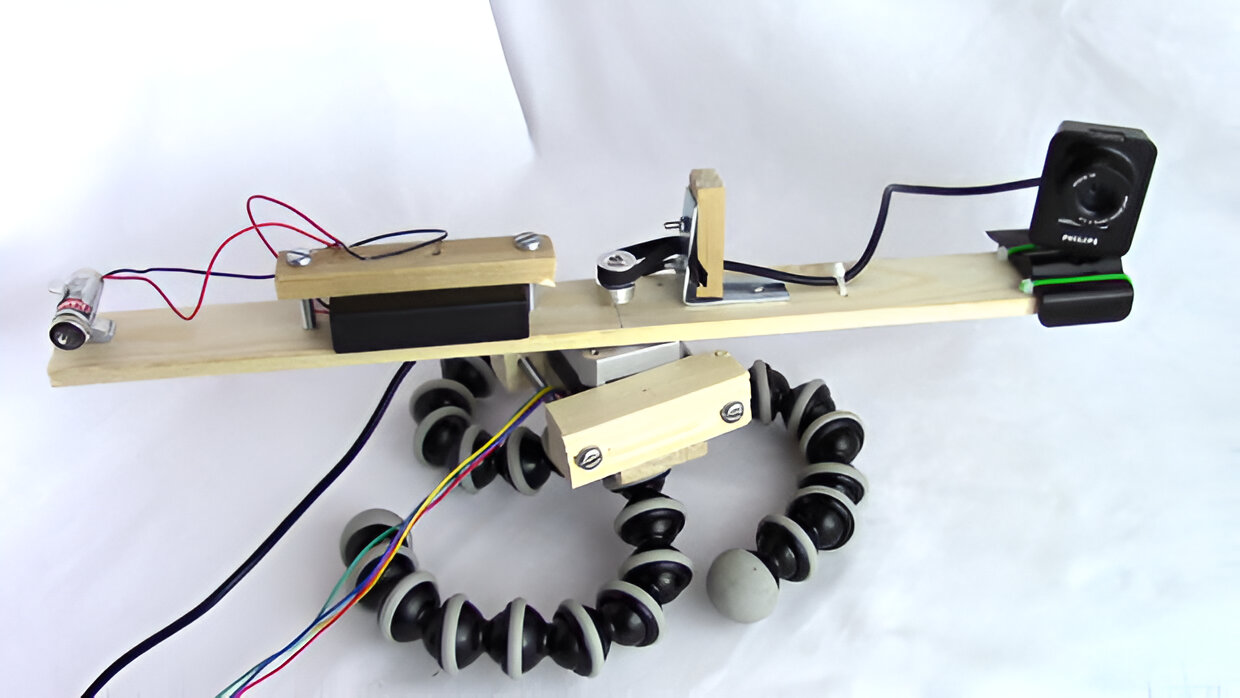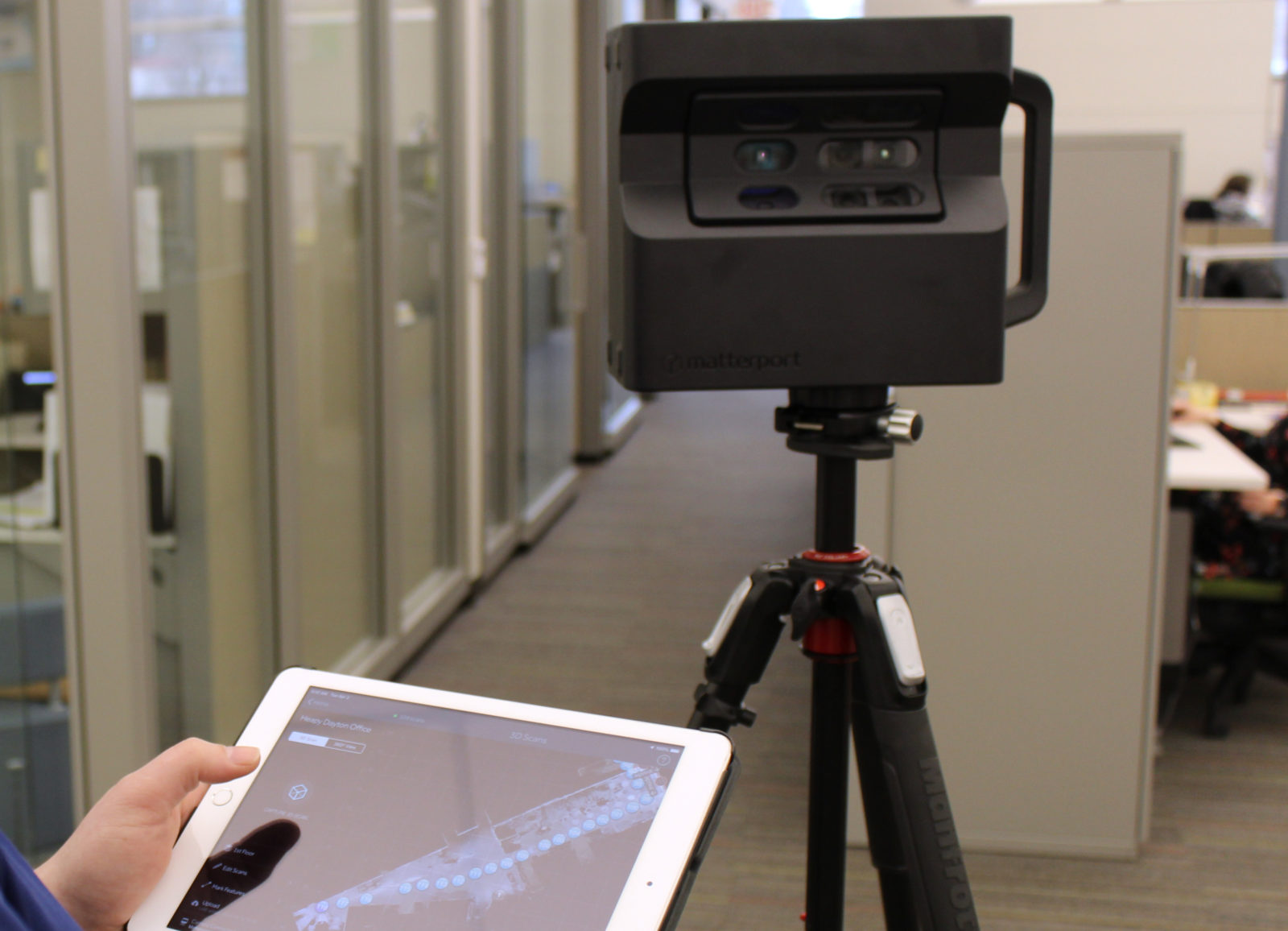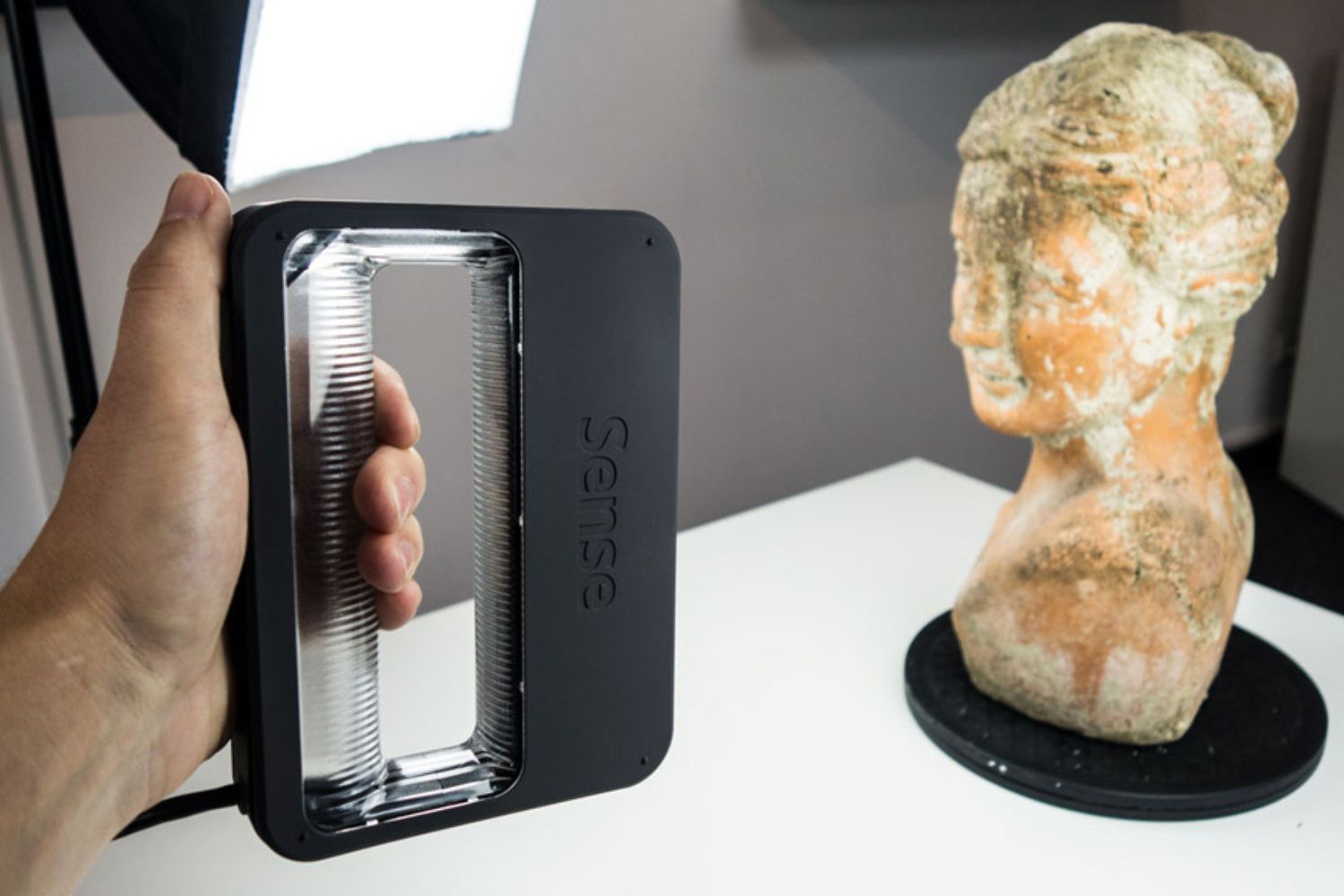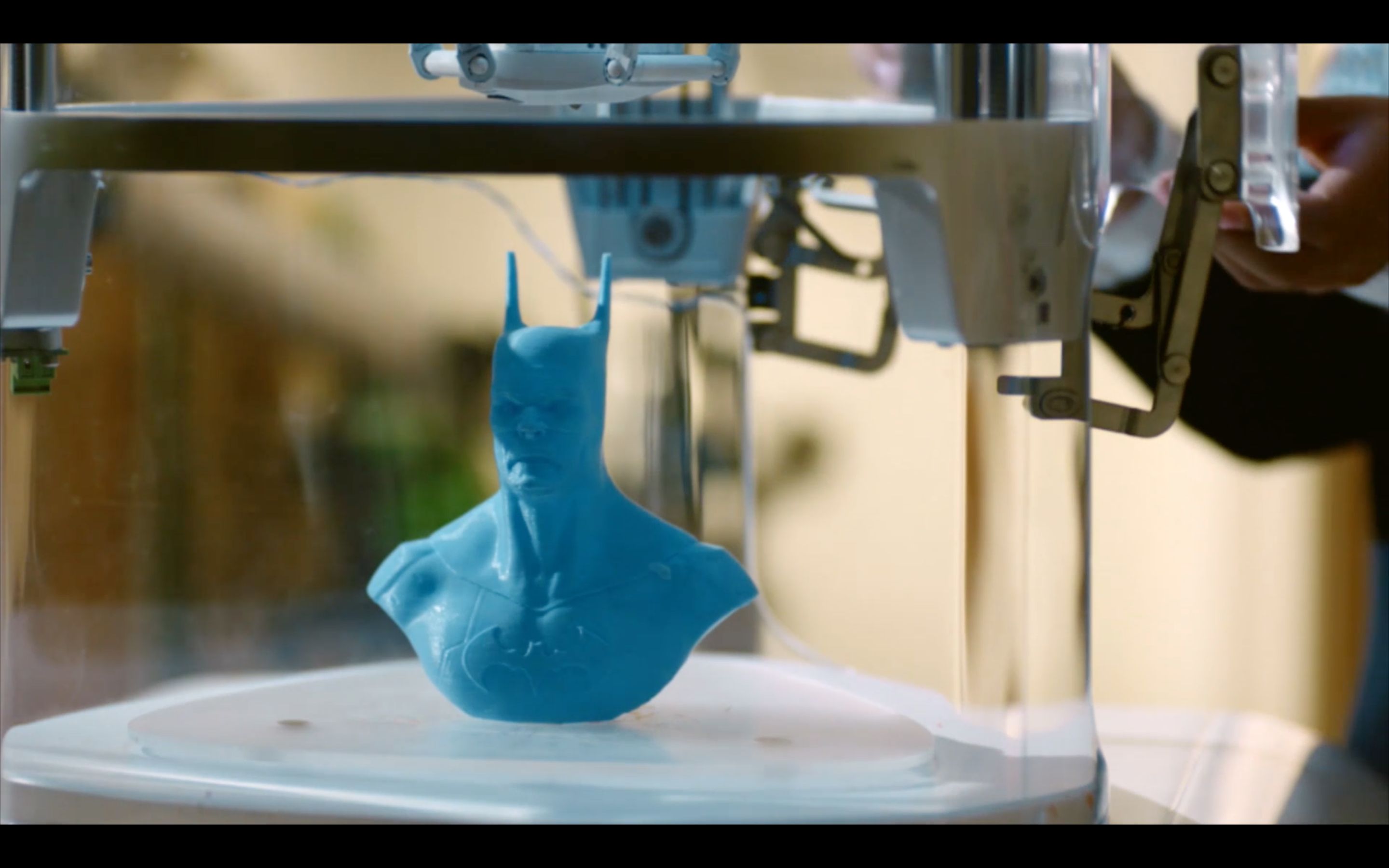Introduction
3D scanners have become increasingly popular in various industries, from manufacturing and engineering to healthcare and entertainment. These devices allow users to capture the physical shape and dimensions of objects in a digital format, opening up a world of possibilities for design, prototyping, and analysis.
One common question that arises when considering a 3D scanner is, “How much does it cost?” The price of a 3D scanner can vary significantly depending on several factors, including the technology used, the level of accuracy and resolution, the size of the objects it can scan, and the specific features and functionalities.
In this article, we will explore the factors that affect the price of a 3D scanner, the different types of scanners available, and their price ranges. By understanding these elements, you can make a more informed decision when considering a 3D scanner purchase.
It is important to note that while cost is a significant consideration, it is not the only factor to consider when choosing a 3D scanner. Other factors, such as the intended application, scan speed, ease of use, and compatibility with software, should also be taken into account.
Now, let’s dive into the factors that impact the price of a 3D scanner and explore the different options available in the market.
Factors Affecting the Price of a 3D Scanner
When it comes to the price of a 3D scanner, several key factors come into play. Understanding these factors can help you determine which scanner is best suited to your needs and budget. Let’s explore the main factors that influence the price of a 3D scanner:
1. Technology Used:
The underlying technology behind a 3D scanner significantly impacts its price. There are various scanning technologies available, such as laser-based, structured light, and photogrammetry. Each technology has its own advantages and limitations, with some offering higher accuracy and resolution than others. Generally, scanners that utilize more advanced technologies tend to be more expensive.
2. Accuracy and Resolution:
The level of accuracy and resolution that a 3D scanner can achieve is an important factor in determining its price. Higher accuracy and resolution scanners can capture more detail and produce more precise 3D models. However, these scanners typically come with a higher price tag due to the advanced sensors and algorithms required for enhanced precision.
3. Scanning Area and Object Size:
The size of the scanning area and the objects that a 3D scanner can handle affect its price. Scanners with a larger scanning area or the ability to scan larger objects typically cost more due to the increased hardware requirements and complexity.
4. Features and Functionalities:
Additional features and functionalities also contribute to the price of a 3D scanner. Some scanners offer automated features like turntable rotation, which can streamline the scanning process. Others may come with software packages that provide advanced editing and post-processing capabilities. The inclusion of these extra features can increase the overall cost of the scanner.
5. Brand and Reputation:
The reputation and brand value of a 3D scanner manufacturer can impact the price. Well-established brands with a history of delivering reliable and high-quality products may have a premium price compared to lesser-known brands. Keep in mind that while brand reputation can add a level of assurance, it is essential to consider other factors as well when making a purchasing decision.
By considering these factors, you can determine which features and specifications are most important to you and allocate your budget accordingly. Different applications may require different levels of accuracy, resolution, and functionalities, so it’s crucial to strike the right balance between price and performance.
Types of 3D Scanners and Their Price Range
3D scanners come in various types, each utilizing different technologies and catering to specific application needs. Let’s explore the different types of 3D scanners available in the market and their corresponding price ranges:
1. Laser-Based Scanners:
Laser-based scanners use a laser light source to capture the geometry of an object. These scanners offer high accuracy and are suitable for a wide range of applications, including industrial design, quality control, and reverse engineering. Laser-based scanners can range in price from a few hundred dollars for entry-level devices to several thousand dollars for professional-grade scanners.
2. Structured Light Scanners:
Structured light scanners project a pattern of light onto the object and analyze its deformation to generate a 3D model. These scanners are known for their fast scanning speed and are commonly used in applications like animation, gaming, and medical imaging. The price of structured light scanners can vary, with entry-level models starting around a few hundred dollars and high-end systems costing several thousand dollars.
3. Photogrammetry Scanners:
Photogrammetry scanners use multiple cameras to capture images of an object from different angles. These images are then processed to create a 3D model. Photogrammetry scanners are ideal for capturing detailed textures and are commonly used in industries like archaeology, art, and visual effects. The price range for photogrammetry scanners typically starts in the mid-range, ranging from a few thousand dollars to tens of thousands of dollars for advanced systems.
4. Contact Scanners:
Contact scanners, also known as touch-probe scanners, physically touch the object to measure its dimensions. These scanners are primarily used in industrial and engineering applications, where high precision is crucial. Contact scanners can range from a few hundred dollars for basic handheld devices to several thousand dollars for professional-grade systems with motorized arms and advanced measurement capabilities.
It’s important to note that these price ranges are approximate and can vary based on factors such as accuracy, resolution, and additional features. It’s recommended to thoroughly research and compare different models within each type of scanner to find the best fit for your specific requirements and budget.
Entry-Level 3D Scanners
Entry-level 3D scanners are designed for individuals or small businesses looking to explore the world of 3D scanning without breaking the bank. These scanners offer basic functionality and are more affordable compared to their higher-end counterparts. Here are some key characteristics and price ranges typically associated with entry-level 3D scanners:
1. Price Range:
Entry-level 3D scanners generally fall within the range of a few hundred to a few thousand dollars. The exact price can vary depending on the brand, technology used, and the features included.
2. Technologies Used:
Entry-level scanners often use simpler technologies such as structured light or laser-based scanning. While they may not offer the same level of accuracy and resolution as professional-grade scanners, they can still deliver adequate results for hobbyists, educators, and entry-level professionals.
3. Features and Functionalities:
Entry-level scanners typically have a streamlined feature set, focusing on core scanning capabilities. They may have fewer automated features and limited editing and post-processing options compared to higher-end models.
4. Ease of Use:
Most entry-level scanners are designed with user-friendliness in mind. They often come with intuitive software interfaces and comprehensive documentation to help beginners navigate the scanning process with ease.
5. Applications:
Entry-level scanners are suitable for a range of applications, including 3D modeling, hobbyist projects, basic prototyping, and education. They are a great entry point for beginners to gain hands-on experience with 3D scanning technology.
While entry-level scanners may not offer the same level of precision or advanced features as higher-priced models, they still provide a cost-effective solution for individuals and small businesses looking to enter the world of 3D scanning. It’s important to carefully assess your specific needs and goals to determine whether an entry-level scanner is sufficient or if investing in a higher-end model is warranted.
Mid-Range 3D Scanners
Mid-range 3D scanners offer a balance between affordability and performance, making them a popular choice for professionals and small to medium-sized businesses. These scanners provide higher accuracy, resolution, and additional features compared to entry-level models, without the high price tag of premium-grade scanners. Here are some key features and characteristics of mid-range 3D scanners:
1. Price Range:
Mid-range 3D scanners typically range from a few thousand to several thousand dollars, depending on the brand, specifications, and included functionalities.
2. Accuracy and Resolution:
Mid-range scanners offer improved accuracy and resolution compared to entry-level models, enabling users to capture finer details and more precise 3D models. These scanners are suitable for applications that require higher levels of accuracy, such as product design, quality control, and rapid prototyping.
3. Technologies Used:
Mid-range scanners often employ more advanced scanning technologies, such as laser-based or structured light, to achieve higher levels of accuracy and faster scanning speeds. These scanners may also include additional sensors or cameras for enhanced data acquisition.
4. Features and Functionalities:
Mid-range 3D scanners come with a broader range of features and functionalities compared to entry-level models. These may include automated turntable rotation, multi-scan stitching, advanced editing and post-processing capabilities, and compatibility with industry-standard software.
5. Applications:
Mid-range scanners are suitable for a wide range of applications, including industrial design, reverse engineering, healthcare, and digital preservation. They offer a higher level of versatility and accuracy, making them a valuable tool for professionals in various industries.
For professionals or businesses that require greater precision and more advanced capabilities than entry-level scanners can offer, but are not ready to invest in premium-grade scanners, mid-range scanners provide an excellent balance of performance and affordability. It’s important to carefully evaluate your specific needs, budget, and long-term goals to select a mid-range scanner that meets your requirements.
High-End 3D Scanners
High-end 3D scanners are designed for professionals and businesses that require the highest level of accuracy, resolution, and advanced scanning capabilities. These scanners come with cutting-edge technologies and features, making them ideal for complex projects and demanding applications. Here are some key features and characteristics of high-end 3D scanners:
1. Price Range:
High-end 3D scanners typically have a price range starting from several thousand dollars and can go up to tens of thousands of dollars, depending on the brand, specifications, and included functionalities.
2. Accuracy and Resolution:
High-end scanners boast exceptional accuracy and resolution, capturing even the tiniest details with precision. They are often capable of achieving sub-millimeter accuracy and ultra-high resolution for applications that demand the utmost precision, such as industrial metrology, aerospace, and medical research.
3. Technologies Used:
High-end scanners leverage advanced technologies like blue-light scanning, laser triangulation, or photogrammetry, combined with sophisticated algorithms and sensors. These technologies offer unparalleled scanning capabilities, enabling users to capture complex geometries and intricate surface textures.
4. Features and Functionalities:
High-end 3D scanners come equipped with advanced features and functionalities that streamline the scanning process and enhance data accuracy. These may include automated scanning workflows, real-time mesh feedback, high-speed data processing, and compatibility with professional-grade software for advanced analysis and visualization.
5. Applications:
High-end scanners are primarily used in industries that demand the highest level of accuracy and precision, such as automotive design, industrial inspection, and digital arts. They are capable of handling complex scanning tasks and can provide reliable and accurate data for critical applications.
While high-end 3D scanners offer exceptional performance and advanced capabilities, they come with a higher price tag. These scanners are best suited for professionals and businesses that require the highest level of accuracy and have the budget to invest in top-of-the-line equipment. It’s important to assess your specific needs, project requirements, and long-term goals to determine if a high-end scanner is necessary for your application.
Specialty 3D Scanners and Their Pricing
Specialty 3D scanners are designed to cater to specific industries or specialized applications that require unique scanning capabilities. These scanners are tailored to address specific challenges and deliver exceptional results in their respective fields. Let’s explore some examples of specialty 3D scanners and their pricing:
1. Dental 3D Scanners:
Dental 3D scanners are specifically designed for capturing the digital models of teeth, gums, and oral structures. They are commonly used in orthodontics, prosthodontics, and dental labs. Dental scanners come with features like high-precision scanning, color capture, and compatibility with dental CAD/CAM software. Pricing for dental 3D scanners can range from a few thousand to tens of thousands of dollars, depending on the level of accuracy and additional functionalities.
2. Art and Heritage 3D Scanners:
Art and heritage scanners are used to digitize sculptures, artifacts, and cultural heritage objects with precision and accuracy. These scanners often combine laser-based or structured light technologies with advanced editing and texture mapping capabilities. The pricing for art and heritage scanners starts in the mid-range, ranging from a few thousand to tens of thousands of dollars, depending on the exact requirements and specifications.
3. Body 3D Scanners:
Body scanners are designed primarily for capturing 3D models of the human body, such as for applications in healthcare, fitness, and fashion. These scanners can capture body measurements, shape, and contours accurately. Body scanners can range in price, with entry-level models starting around a few thousand dollars and advanced, full-body scanners costing tens of thousands of dollars.
4. Industrial Metrology Scanners:
Industrial metrology scanners are used in manufacturing and quality control processes to ensure precise measurements and dimensional accuracy of components and assemblies. These scanners often incorporate advanced measuring technologies, such as laser trackers or structured light systems, and are typically priced in the higher-end range, ranging from tens of thousands to hundreds of thousands of dollars.
It’s important to note that the pricing for specialty 3D scanners can vary significantly based on the specific application requirements, included features, and brand reputation. When considering a specialty scanner, it’s crucial to thoroughly assess your industry needs and evaluate the return on investment that the scanner can deliver for your specialized applications.
Industry-Specific 3D Scanners and Their Price Point
Various industries have unique requirements when it comes to 3D scanning, and there are industry-specific scanners tailored to meet those needs. These scanners offer specialized features, capabilities, and workflows designed specifically for specific industries. Let’s explore some examples of industry-specific 3D scanners and their price points:
1. Medical and Healthcare:
Medical and healthcare 3D scanners are used for applications such as orthotics, prosthetics, surgical planning, and anatomy modeling. These scanners often employ structured light or laser-based technology combined with medical-grade software solutions. The pricing of medical and healthcare scanners can vary widely, starting from a few thousand dollars for entry-level scanners to high-end systems that can cost tens of thousands of dollars.
2. Architecture and Construction:
3D scanners used in the architecture and construction industry are critical for capturing accurate as-built models, conducting building assessments, and creating detailed floor plans. These scanners often utilize laser scanning technology to capture precise measurements. The price of architecture and construction scanners typically ranges from mid-range to high-end, starting from a few thousand dollars and going up to tens of thousands of dollars.
3. Automotive and Aerospace:
The automotive and aerospace industries rely on 3D scanners for quality control, reverse engineering, and design analysis. These scanners often incorporate advanced laser or structured light technology, high-precision sensors, and specialized software for complex data analysis. The price range for automotive and aerospace scanners varies widely, with high-end scanners costing tens of thousands to hundreds of thousands of dollars.
4. Cultural Heritage and Archaeology:
Scanners used in cultural heritage preservation and archaeology play a crucial role in capturing detailed 3D models of historical artifacts, monuments, and archaeological sites. These scanners often utilize photogrammetry or structured light technology and come with specialized software for accurate reconstruction and preservation. The pricing for cultural heritage and archaeology scanners starts in the mid-range, ranging from a few thousand dollars to tens of thousands of dollars.
It’s important to understand that the pricing for industry-specific 3D scanners can vary based on factors such as accuracy requirements, specialized features, software integration, and brand reputation. When considering an industry-specific scanner, it’s essential to evaluate your specific industry needs, the level of accuracy and detail required, and the return on investment that the scanner can provide for your industry-specific applications.
Conclusion
3D scanners come in various types, each catering to different needs and budgets. Understanding the factors that affect the price of a 3D scanner is crucial in making an informed decision. The technology used, accuracy and resolution, scanning area and object size, features and functionalities, and brand reputation all play a role in determining the price.
Entry-level 3D scanners offer a cost-effective option for beginners or those with budget constraints. They provide basic functionality and are suitable for hobbyists, educators, and entry-level professionals.
Mid-range 3D scanners strike a balance between affordability and performance. They offer improved accuracy, resolution, and additional features, making them a popular choice for small to medium-sized businesses and professionals in various industries.
High-end 3D scanners deliver exceptional performance, accuracy, and advanced capabilities. They are suitable for professionals and businesses that require the highest level of precision and have the budget to invest in top-of-the-line equipment.
Specialty and industry-specific 3D scanners cater to specific needs and applications. From dental and art scanners to medical and automotive scanners, these specialized devices provide tailored features and functionalities to deliver optimal results in their respective fields.
When considering a 3D scanner, it’s important to evaluate your specific requirements, budget, and long-term goals. Choose a scanner that aligns with your needs in terms of accuracy, resolution, features, and application-specific capabilities.
By carefully assessing the factors and understanding the different types of 3D scanners available, you can choose the right scanner that meets your needs and budget, unlocking the potential to innovate, create, and excel in your industry.







